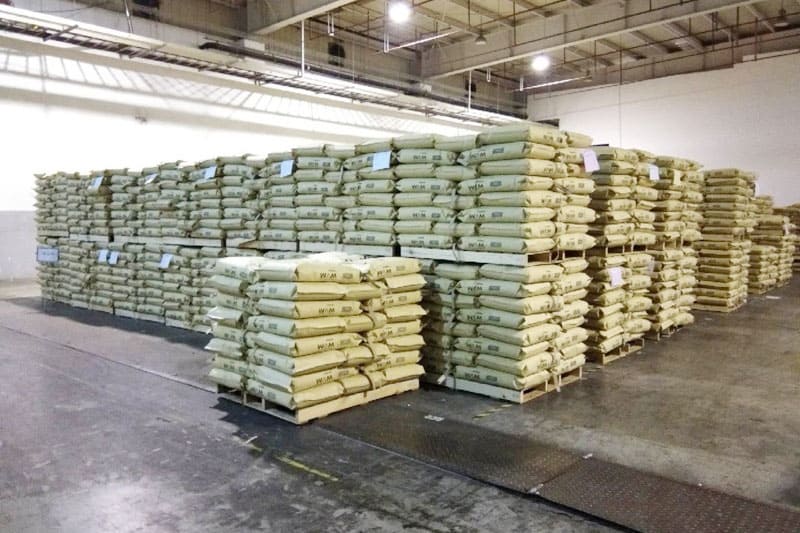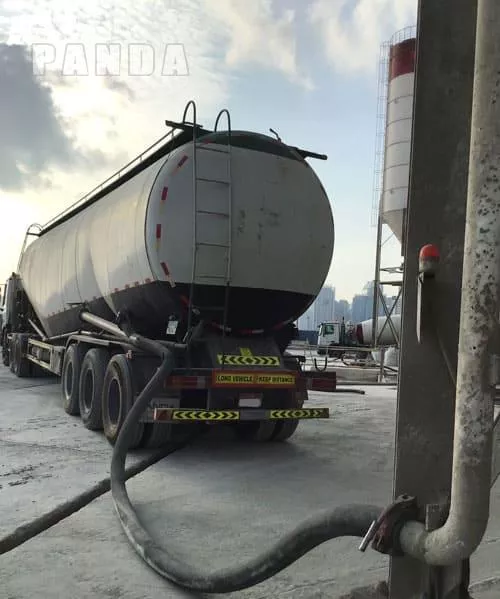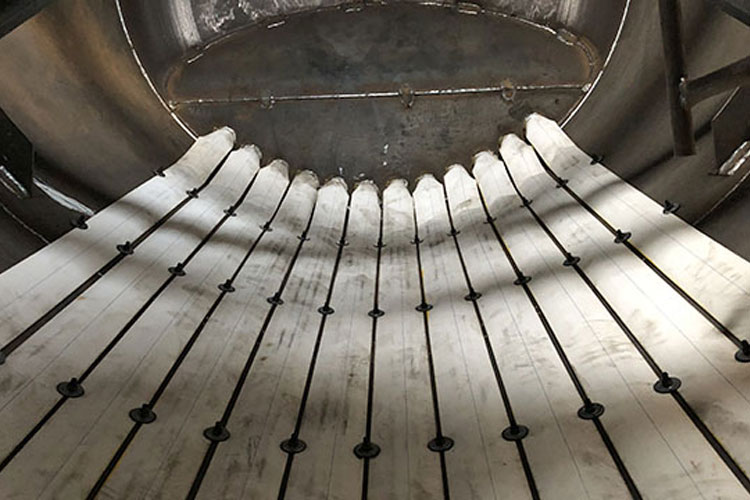- What is a cement tanker?
- Cement tanker used to transport
- What are the parts of cement tanker?
- What are other ways of transporting bulk cement?
- What is the main role of cement?
- What are the storage methods for cement?
- How much cement can be transported in a cement tanker
- How to calculate how much cement can be transported each time
- How many bags of cement in a trailer load
- Can cement tankers be used to transport flour?
- Why use a flour tanker to transport flour?
- What else can a flour tanker transport besides flour?
- How does cement tanker works?
- How to load the cement tanker?
- How to unload the bulk cement tanker?
- Precautions for the loading process
- What are the precautions in the unloading process?
- Do you need to clean the internal cement after unloading is finished
- What are the considerations for purchasing cement tanker
- Can you help me to recommend cement tanker?
What is a cement tanker?
The first cement trailer was invented in 1904, and it has been more than 100 years of history since then, and the most common types of cement trailers are v type, w type, and silo type. The different types of cement trailers look different, and there are also some differences in the way they are unloaded.
Cement bulker in terms of material distinction can be divided into carbon steel and aluminum alloy material, of which carbon steel is the most common material, the use of more, low price. Aluminum cement trailer is relatively lighter in weight and higher in price, which is more suitable for some countries with limited weight.

Cement tanker used to transport
The most important role of cement trailers is to transport cement, which is one of the common items in construction sites. At the same time, we also use cement trailers to transport PVC material, fly ash, lime powder and other powder materials with diameters ≤ 0.1mm.
What are the parts of cement tanker?
Cement trailer is composed of a tank, chassis, leg, tire, axle, suspension, lugs, u-blots, air chamber, leaf spring, gas circuit, wiring, Led light, crash beam, toolbox, and traction pin. (more about dry bulk trailer accessories)
What are other ways of transporting bulk cement?
Bulk cement can be transported by sea and by land, by bagged cement, by bulk cement and by concrete. Among them, bagged cement transportation is generally applied to the relatively small amounts of cement transportation, cement trailer transportation cement is the most chosen transportation method.

What is the main role of cement?
The main reason cement is so widely used is because it is a binder that holds together many different materials and is very strong and stable, making it a very common building material. The most common use of cement is in urban infrastructures, such as buildings and other construction.
Cement plays a big role in the development of cities and can be made into many other products, such as cement foam concrete, magnesia foam concrete, gypsum foam concrete, alkali slag foam concrete, etc.
What are the storage methods for cement?
Cement must be stored in a dry, leak-proof, moisture-proof place, with doors and windows closed, and must be stacked above a 6-foot high board. The usual storage methods are bagged storage and cement tank storage.
How much cement can be transported in a cement tanker
Pneumatic trailers can transport up to 120 tons of cement at a time, and generally, the weight of cement transported is 25-85 tons, depending on the configuration of the cement trailer and local laws and regulations.
How to calculate how much cement can be transported each time
Usually, the cement bulker trailer volume is fixed, we can use volume*1.25(density of cement) to get the final weight that can be transported.

How many bags of cement in a trailer load
Cement tanker trailer can transport 50-240 bags of cement, which is determined by the weight of each bag of cement, usually one bag of cement weighs 50KG.
Can cement tankers be used to transport flour?
Cement bulk trailer cannot be used to transport flour, if you want to transport flour, you should use flour tanker trailers. The cement tank trailer and flour tankers are different in shape and work differently.
Why use a flour tanker to transport flour?
Flour and cement are different in density, and since flour is edible, it must be made of stainless steel or aluminum alloy, while cement tanker trailer is usually made of carbon steel.

What else can a flour tanker transport besides flour?
Flour tanker can be used to transport flour, starch, wheat flour, and other edible bulk powders, and the density varies between different goods so that the same volume of flour tanker transports different weights of goods, the density of flour is 0.5Kg/m3.
How does cement tanker works?
Simply speaking, pneumatic truck is first loaded at the warehouse or other places, and then the cement transport trailer is driven to the designated location, and then loaded, and after the loading is completed, it is driven to the destination and then unloaded, and so on. Usually, if there is no cargo during the driving process, we choose to lift one row of axles to avoid tire wear and save cost.

How to load the cement tanker?
- Before loading, the first thing we should check is the exhaust valve, this step is very important to prevent the cement bulk carrier trailer from having pressure without finishing unloading.
- After making sure the exhaust valve is open, open the manhole cover and then start loading.
- After the loading is finished, we should clean the seal, clean the cement on the seal, and then tighten the manhole cover.
- After finishing, you should close the exhaust valve and discharge butterfly valve to prevent the cement inside the tank from getting wet.
How to unload the bulk cement tanker?
- Firstly, connect the hose to the mixing bin or the designated location to make sure the connection is strong to prevent it from falling off during the unloading process.
- Start the air compressor, run it smoothly first, then gradually increase the horsepower to make the air compressor reach the rated speed, so as to start adding pressure to the inside of the tank.
- We can observe the pressure inside the tank through the pressure gauge, when the pressure reaches 0.15Mpa, you should open the secondary air ball valve to unclog the discharge pipe, make sure the discharge pipe is not blocked, and then close the secondary air ball valve.
- When the internal pressure of the tank reaches 0.2Mpa, it is time to start unloading officially and open the unloading butterfly valve.
- When unloading, the air compressor is working all the time, so the pressure inside the tank will not be reduced.
- When unloading, you can unload the second half of the cargo first, and then unload the first half of the cargo, just close the front valve first.
- When no cargo is unloaded, it means that the unloading is finished.
- The last step is to confirm that there is no residue, then you can turn off the air compressor, then open the exhaust valve, close the unloading butterfly valve, unload the quick interface, take off the hose and put it back into the trailer, then you can finish the unloading work.
Precautions for the loading process
- The exhaust valve must be opened before loading.
- You need to clean the sealing ring after loading to avoid not sealing well.
What are the precautions in the unloading process?
- Make sure the safety valve is working properly to prevent accidents.
- Make sure the internal pressure of the tank does not exceed 0.2Mpa.
Do you need to clean the internal cement after unloading is finished
It is better to clean the internal cement. When we need to transport the goods again after the unloading is finished, we can choose not to clean the cement first. If it is said that the cement trailer does not work for a long time after the unloading is finished, then it is still recommended to clean the cement left inside the tank.

What are the considerations for purchasing cement tanker
- First of all, make sure to choose according to the local laws and regulations.
- Choose the appropriate configuration according to the goods you are transporting.
- Choose the configuration according to the local road.
- Tell us your needs, and we will recommend the most reasonable configuration for you.
Can you help me to recommend cement tanker?
Yes, the most common trailer we use is 50 ton cement tanker truck, the smallest cement bulker is 25 ton, and the largest cement tanker is 120 ton, now tell us your requirements.
